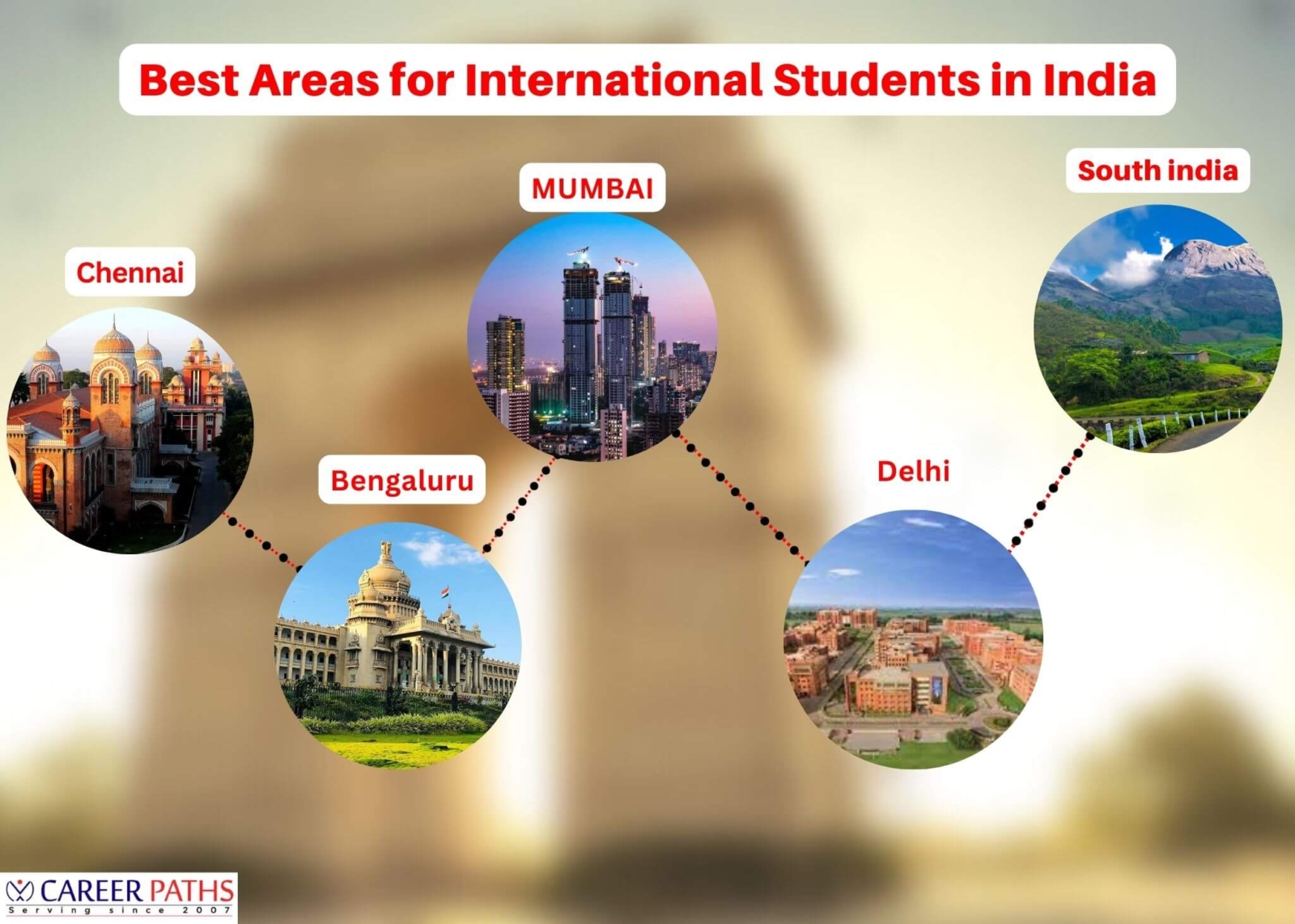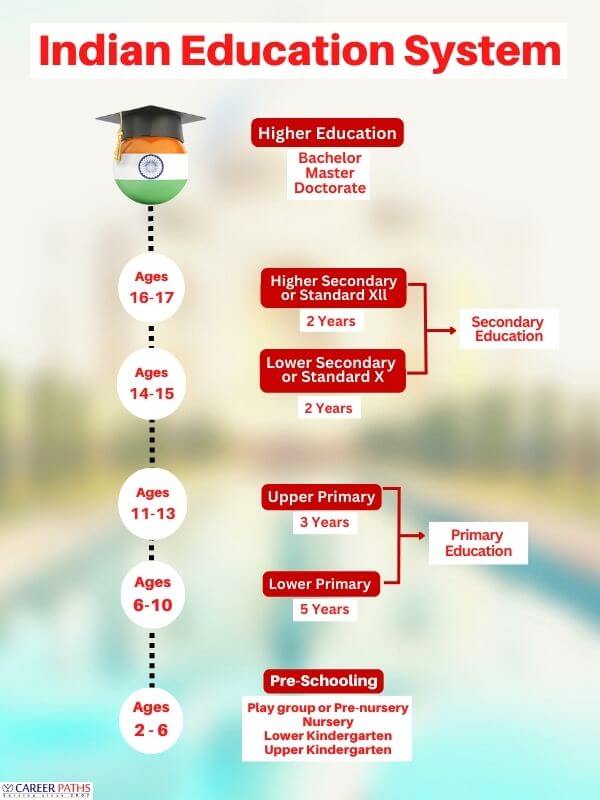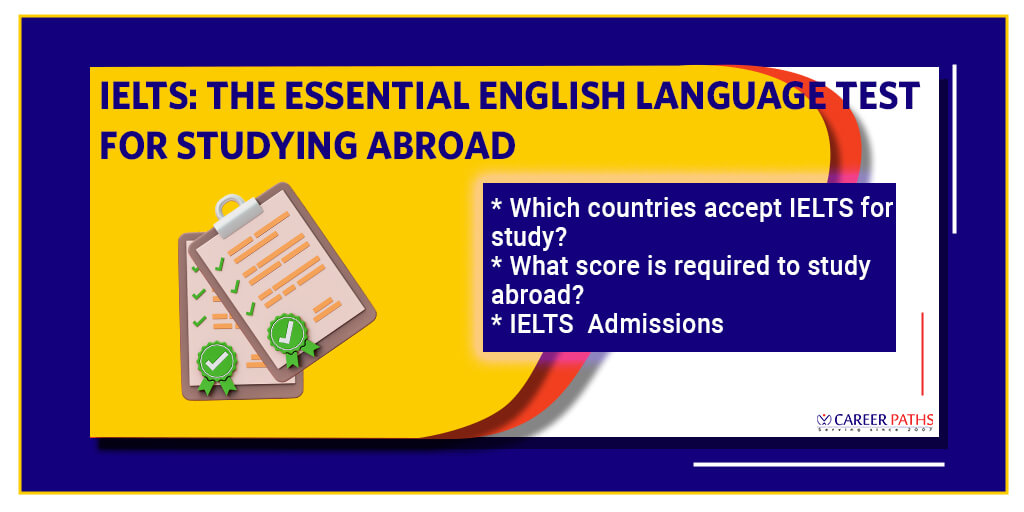With a wide variety of educational systems, vibrant cultures, and more, Asia offers top-notch higher education. Several of the best universities in the world are located in Asian nations. India, sometimes known as the Republic of India, is a nation in South Asia. India has always been a favored goal for foreign students and is the most famous historical and culture-oriented country in Asia for international students. The Indian government has mandated free and compulsory education as an essential right for children aged six to 14 in India.
The basic education system in India is divided into three main parts with sub-divisions. They are primary education which has a lower primary and upper primary division, secondly, secondary education which has lower secondary or standard X and higher secondary or Xll, and lastly, higher education which includes bachelor, master, and doctorate degrees. Let’s explore the diverse and excellent education system of India.
History of Indian Education
The Indian educational system has not prospered recently. To reach this exceptional level, it took several years. Indian education was initially restricted to religious topics.
Early Stage
As Chinese scholars entered Indian institutions to study Buddhist scriptures in the tenth century, education in India advanced to a new level. Later, a large number of other academics traveled to India and shared their knowledge. Indian academics began traveling abroad during that time to interpret Buddhist scriptures.
10th Century
The Chola dynasty offered state assistance to a chosen group of students in educational institutions in 1024 CE. In the 12th and 13th centuries, there was a school in the Nataraja temple.
Islamic Era
Islamic scholars had already arrived in India by then. By the 12th or 13th century, India had a developed system of science and technology. Following the arrival of the Islamic rulers in India, the conventional educational approach changed. The Greek, Persian, and Middle Eastern traditions had a significant influence on the grammar, philosophy, mathematics, and law that were taught in India’s traditional madrassas and maktabs shortly after their arrival. Books on grammar, philosophy, logic, astronomy, mathematics, and mysticism were published in the 18th century.
Traditional and new academic disciplines were blended. The educational system adopted an inclusive approach under the reign of Great Akbar, adding more classes in geography, agriculture, medicine, and various languages and religions. Traditional science was enhanced during this time by Aristotle, Bhskara II, Charaka, and Ibn Sina’s theories.
Christian community
The Christian community introduced printing and the European college system to India through the founding of Saint Paul’s College in Goa in 1542.
British Rule
The English language developed in India in the 19th century. English education or modern education are other names for the time period.
Early 19th century
In India, the number of students rose. India’s rural areas saw a rise in education. Missionary schools founded in India in the 1820s helped to bolster British education. Several medical colleges were established in 1835, and many female applicants were seen to be accepted.
Universities
Many ambitious upper-class men traveled to England in the late 19th century to further their education and advance their professions, particularly to enroll in the Inns of Court to pursue a legal degree. In 1882, there are 600 students total split throughout 4 institutions and 67 colleges.
There were 167 colleges and 14 universities overall in 1922. In 1875, India’s first contemporary institution of higher learning for Muslims was founded. The University of Bombay (1857), the University of Calcutta (1857), the University of Madras (1857), and many more renowned universities were created during this time. a set of policies that were in place for the first half of the 20th century. The first Indian Institutes of Technology were founded in the 1950s.
Education Levels in India
The Indian education system is very unique and diverse. It has so many forms and methods of teaching. The Indian people are a combination of various skills, religious beliefs, ethnicities, socioeconomic statuses, and philosophies. The history of the education system shows the same.
International education has a significant economic impact on India. Its educational system has three levels. They are primary education (lower primary and upper primary divisions), secondary education (lower secondary or standard X and higher secondary or Xll divisions), and higher education (bachelor, master, and doctorate degrees).
Pre-primary Education
In the Indian education system, pre-primary education is not compulsory by the government. However, children are admitted to pre-primary by their parents to be fully prepared for the next level of Indian education. Pre-primary education includes playgroup (pre-nursery), nursery, lower kindergarten, and lastly upper kindergarten. The age limit for admission into pre-primary education is 2 to 3 years. Pre-primary education is not mandatory in the Indian education system but it is free in all public pre-primary schools and rural areas pre-primary schools. In pre-primary education, children are taught self-help qualities, norms, and behaviorism.
Primary Education
Indian education system’s primary level is divided into two parts. They are lower Primary and Upper Primary. Primary education is also known as elementary education. Children aged 6 to 14 study in the primary section of Indian education. According to the Indian Education Act of 2009, education has been made free for children aged 6 to 14 years old or up to class 8.
Lower Primary
Lower primary education starts from classes one to five.
Upper Primary
The upper primary education starts from class six to eight.
Secondary Education
Indian education system’s secondary level covers the age group 14 to 17 or 18. There are two stages to it. The final two years of secondary are often called higher secondary school or senior secondary schooling or simply the plus two stage. The two parts of secondary education are a very important stage for every student’s life. Secondary education is divided into two parts they are grades 9 to 10 (Lower Secondary or standard X) and grades 11 to 12 (Higher Secondary or Xll)
Lower Secondary or Standard X
Firstly, the first stage of secondary education lasts for 2 years. Students aged 13 or 14 to 15 in this class.
Higher Secondary or Xll
Secondly, after completing the lower secondary or standard X, students continue their education in the higher secondary or Xll level.
Types of Schools
There are different types of schooling systems that exist in India. They are-
- Government schools.
- Government-aided private schools.
- Private schools (unaided).
- National schools.
- International schools.
- Home-schooling.
- Non-governmental work in education.
Higher Education
Higher education is provided in India through universities, institutes, private training, and training organizations. Depending on the programs, higher education consists of undergraduate degrees to doctorate degrees. Many public Indian institutions have been credited with much improvement over the past years, especially in higher education and scientific study.
Some Indian institutions like the Indian Institutes of Technology (IITs) and the National Institutes of Technology (NITs), have received international recognition for the quality of their undergraduate engineering education. Several other institutes of fundamental research, including the Indian Institute of Science (IISc), the Indian Association for the Cultivation of Science (IACS), the Tata Institute of Fundamental Research (TIFR), the Jawaharlal Nehru Centre for Advanced Scientific Research (JNCASR), and the Indian Institute of Science Education and Research (IISER), are well-known for their research standards in science and mathematics.
Language in India
Around 52.83 crore Indians speak Hindi in India. It is one of India’s official languages. English, Bengali, and Marathi come after that, respectively.
English is widely spoken in India. However, in some rural areas, you may find it very difficult to communicate in English. In most places in India, along with Hindi, English is the official language. Most Indians speak these two languages.
Most Popular Universities in India
If you are an international student looking for a university for further education, India can be a great option in terms of diverse cultural sites, low-cost education, and natural beauty. According to the World University Rank, the following Indian universities are among the best and score in the top 530 universities in the world.
| University Names | Location in India | QS World University Ranking (2023) |
Global Score (2023) |
|---|---|---|---|
| Indian Institute of Science | Bangalore | 155 | 49.5 |
| Indian Institute of Technology Bombay (IITB) | Mumbai | 172 | 46.7 |
| Indian Institute of Technology Delhi (IITD) | New Delhi | 174 | 46.5 |
| Indian Institute of Technology Madras (IITM) | Chennai | 250 | 38.6 |
| Indian Institute of Technology Kanpur (IITK) | Kanpur | 264 | 37.6 |
| Indian Institute of Technology Kharagpur (IIT-KGP) | Kharagpur | 270 | 37.2 |
| Indian Institute of Technology Roorkee (IITR) | Roorkee | 369 | 29.9 |
| Indian Institute of Technology Guwahati (IITG) | Guwahati | 384 | 29.3 |
| Indian Institute of Technology Indore | Indore | 396 | 28.7 |
| University of Delhi | New Delhi | 521-530 |
Popular Program in India
| Program | Available in India | Approximate Tuition Fee Per Year |
|---|---|---|
| Business Administration | Indian Institute of Technology Bombay (IITB)
Delhi Technological University University of Delhi |
$4,000 to $10,000 |
| Engineering | Indian Institute of Technology Indore
Banaras Hindu University Delhi Technological University Jamia Millia Islamia |
$5,000 to $20,000 |
| Computer Science, IT, Technology | Vellore Institute of Technology
Indian Institute of Technology Bombay Indian Institute of Technology Delhi |
$5,000 to $15,000 |
| Architecture | School of Planning and Architecture
Indian Institute Of Technology–Roorkee (IIT–Roorkee) Indian Institute of Technology Kharagpur |
$5,000 to $20,000 |
| Humanities: Literature, Anthropology, History, Philosophy | University of Delhi
University of Mumbai Jamia Millia Islamia |
$200 to $5,000 |
Indian Online Degree
The Indian higher education system also includes distance learning which is popular among students at home and abroad. Distance learning is one of the most popular educational methods among students. It is a technique that allows you to keep learning without switching your location. You can obtain one of the most prestigious degrees available through online education in India’s top-tier universities by completing your coursework while sitting in front of a laptop. All you need is a reliable internet connection.
Best Online Universities in India
| University Names | Main Location India | University Type |
|---|---|---|
| University of Delhi | Delhi | Collegiate central university and teaches online |
| Narsee Monjee Institute of Management Studies (NMIMS) | Mumbai | Private university and teaches online |
| Chandigarh University | Punjab | Private university and teaches online |
| Indira Gandhi National Open University | New Delhi | Public university and teaches online |
| Amity University | Noida | Private university and teaches online |
| Sikkim Manipal University | Gangtok, Sikkim | Private university and teaches online |
Best Areas for International Students in India
Do you want to study in India? Without a doubt, studying at renowned Indian universities with top-tier academic programs will give you an unforgettable experience. Certainly, India is a great place to start. See the list of the best cities in India for international students in terms of good education, cultural diversity, and beauty of nature below:

Similarly, a few other places are also flourishing day by day with their exceptional education system and literacy rate.
- Karnataka
- Tamil Nadu
- Maharashtra
- Andhra Pradesh and Telangana
- Uttar Pradesh
Funding and Scholarship in India
The Self-Financing Scheme Scholarship in India is one of the most famous among international students. Additionally, under this scholarship, wherever you are coming from Indian government will give you the opportunity to study of your own choice with a full or partial scholarship in any subject you choose. For more information, you can visit the following website on Indian scholarship: https://scholarshipinindia.com.bd/.
FAQs
Which subjects are famous in India for international students?
Some famous subjects are Aerospace Engineering, Law, Chartered Accountancy, Architecture, Chemistry, and Medicine.
Which Indian city is ideal for international students?
Among Indian cities, Mumbai and Bengaluru are the best cities for international students. As a result, those cities are home to some of India’s best universities.
Does India have a good system of education?
The education system in India is in top demand among international students who choose to study in Asia. It has the greatest marks in science, math, and literature.
Conclusion
In conclusion, Due to its rich culture, delectable cuisine, beautiful atmosphere, and vibrant student life, India can be a good option to enroll in your degree if you want to stay in the Asian subcontinent. You can pick up the language while gaining cultural insight, and incredible cuisine by studying in India.
Additionally, studying in India entitles you to the advantages of studying at one of the top universities in the world. Furthermore, the foreign degrees offered by India’s educational system are well-known. It also offers fully funded scholarships and exclusive offers for international students.
Please read our post titled “Study in India with Scholarship” for more information. You can also leave a comment below if you have any questions about India’s education system.












